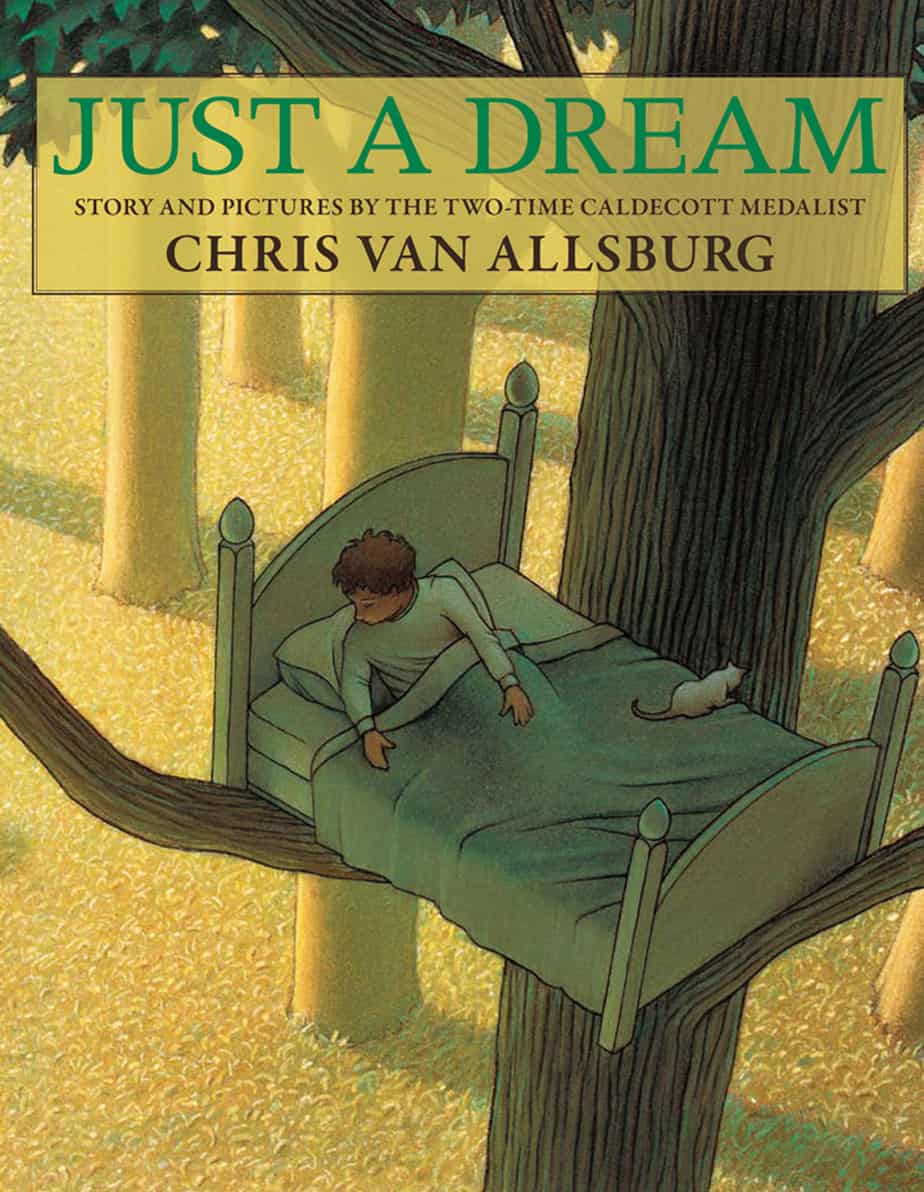Just a Dream by Chris Van Allsburg (1990) is a picture book with an environmental message typical of its era. As part of the corpus of children’s literature with environmental messages, the 1990s offered many excellent children’s book examples of the now-outdated ‘personal responsibility’ message.
Around this time children received the ‘good people recycle’ message. This replaced the ‘good people don’t strew rubbish all over the ground’ message of the 1980s. This was all very comforting. I had a utopian childhood in this regard — I never worried about a dystopian future. So long as I put my own rubbish in the bin and helped sort the recycling, all was well with the world.
For today’s kids, plagued with legitimate fears for the future of the planet, this story must feel like ‘just a dream’.
As you read any picture book by Chris Van Allsburg, admire his versatility with points of view. The first image opens with a low angle (grass roots) shot. Next, we are level with Rose, looking over her shoulder. This encourages us to side with the morality of Rose. Walter is partially hidden behind a hedge fence. Flip the page and Van Allsburg gives us a high angle shot of Walter in the living room. We are now clearly looking down on him, morally as well as actually.
For more on composition in picture books see this post. (The language of film comes in handy.)
SETTING
Each age has its own version of ‘save the environment’. In future scholars will look back on the current corpus of children’s literature and place it easily in time.
STORY STRUCTURE OF JUST A DREAM
The story launches straight into the continuous with just two words indicating the iterative:
As usual, Walter stopped at the bakery on his way home from school.
SHORTCOMING
Walter is immediately established as a character with several of the deadly sins:
- This was peak low-fat era, so indulgence in something like a jam donut was considered indicative of an immoderate temperament.
- Walter throws the donut rubbish at a fire hydrant rather than putting it in the bin, suggesting extreme negligence in an era when children had the ‘don’t litter’ message hammered into us.
- Walter is interested in futuristic dramas on the television. Nothing can disturb him from enjoying his show. Children’s literature of the late 20th collectively establishes that characters who spend a lot of time in front of a screen are bad children. Another example is Mike Teevee of Roald Dahl’s Charlie and the Chocolate Factory.
Thusly, Walter is established as a very specific type of children’s book villain, one I’d hope we see less of now. In books of this era, child villains tend to be:
- Self-absorbed
- Ignorant of the world around them
- Including that of their own immediate environs
These are Walter’s moral shortcomings. We don’t see many highly flawed character for a picture book, which these days are mostly published for preschool readers and star adorable main characters. This is a picture book for older readers.
More modern picture books for older readers will likely flip this morality and point the finger at kids’ Gen X parents. For an example of that see Shaun Tan’s The Lost Thing, in which the parents notice nothing of the fantasy steampunk world around them. They are too busy staring at the TV.
Is there some extra morality in there regarding the typical audience of science fiction shows? I’m not sure. Perhaps this is an ironic choice for Walter, who enjoys thinking about fictional futures but who can’t translate that skill into considering his own very real future, and the future of the actual planet. Does an interest in science fiction make someone better able to imagine a real future? Perhaps. Imagination is a muscle that requires workouts. But fantasy can be dangerous if we use it purely as an escape. This is a perhaps a cautionary tale about enjoying science fiction responsibly.
There is also a plot reason for the sci-fi interest — since reality influences dreams, we surmise Walter’s watching a sci-fi show before bed is what prompts the cheese dreams.
DESIRE
It’s pretty clear what Walter wants. He wants to be left alone to eat jam donuts and watch sci-fi on TV.
Walter is a fantasist. I believe this character is named Walter as a nod to the famous Walter Mitty short story.
Walter went to bed wishing he lived in the future. He couldn’t wait to have his own little plane, a robot to sort out the rubbish, and a machine that could make jam doughnuts by the thousands.
OPPONENT
‘The little girl next door’ is a phrase which dates this book. Unseen narrators in modern children’s books don’t talk down to children in this way. By saying ‘little’, the narrator is clearly much older. Compare and contrast with The Lost Thing, which has a first person narrator clearly older (because he tells us he’s older) but the voice is that of a young person.
There’s also probably a bit of benevolent sexism in the phrase ‘little girl’. Illustrations tell us she’s the same age as Walter (not described as little).
I get utterly sick of girls set up as opposition for boy main characters. Paul Jennings did it constantly. I’m probably sick of it because as a child of the 80s and 90s, I grew up on this trope. We didn’t necessarily see a problem with it, because these girl opponents were so often the ‘good’ characters — the voices of reason. But girls as accessories to the character arcs of flawed boy main characters is hugely problematic.
Rose is an opponent to Walter because she cares for the environment. Her name is clearly symbolic, as she is a nature lover.
I feel it’s become a bit naff to love trees. This is unfortunate, because trees remain the very best technology we have for keeping the ecosystem from collapse. We’re in danger of losing sight of his, hoping for some kind of Tech Jesus to come along and fix the climate crisis in one fell swoop. But no one is likely to design a better device than a tree for absorbing carbon dioxide and potentially harmful gases.
In this story though, Rose is presented earnestly. She is genuinely happy to have received a tree for her birthday.
PLAN
When a story stars a character who likes to sit around in front of the TV eating donuts, that character generally doesn’t ‘Plan’, as such, which makes these stories work a bit differently. (After all, every story needs some sort of plan, or proxy plan.)
Just A Dream is a close cousin of the carnivalesque narrative, in which a child -like character is drawn into this playful fantasy world with no other reason other than to have fun. In The Cat In The Hat, a mischievous animal visits two children at home. Here, the carnivalesque adventure happens in a dream. The atmosphere is less playful, more surreal.
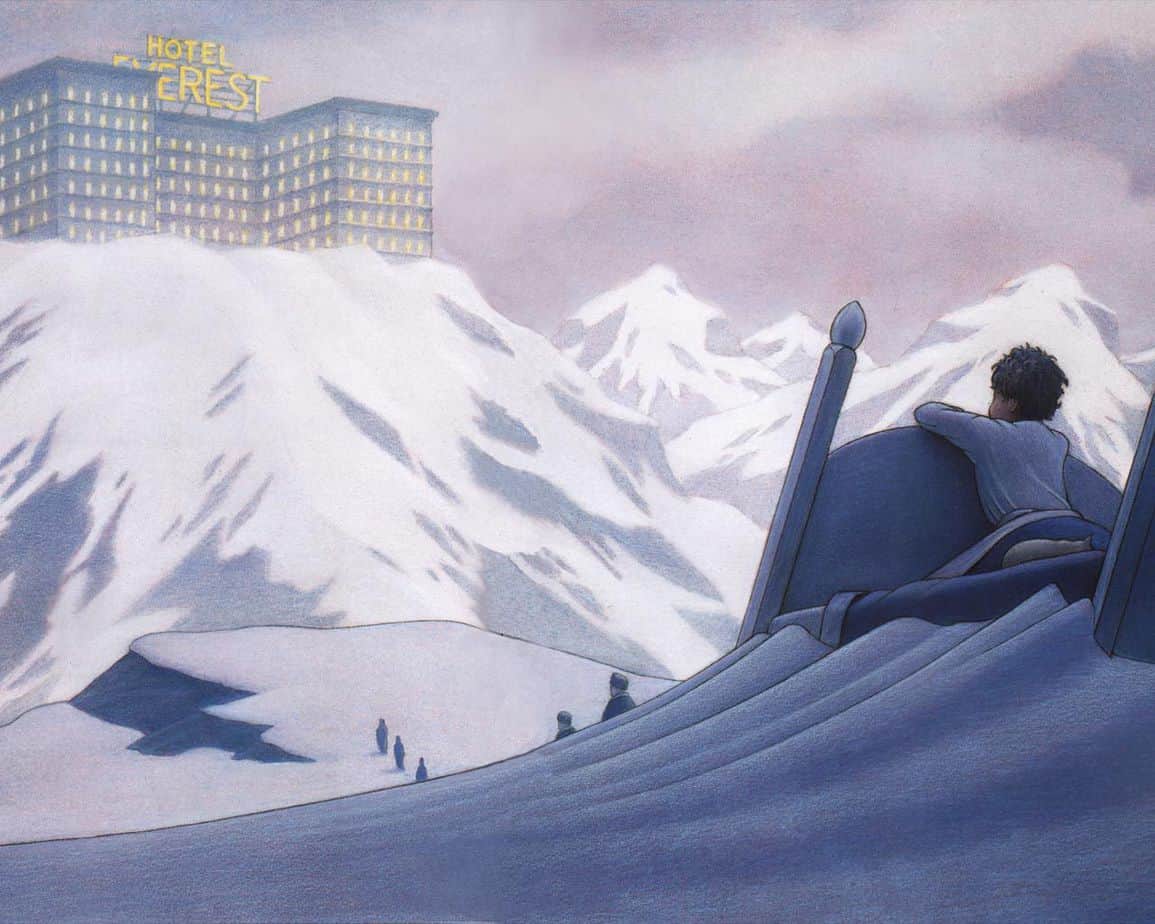
I urge caution with that word ‘surreal‘. In everyday English it’s generally not used how I’m using it here. ‘Surreal’ means ‘hyper real’ — more real than reality. The next level of reality. When Walter is drawn into this fantasy dream, he is being drawn into reality (into an understanding of his real future) rather than away from his day-to-day reality (watching science fiction uncritically).
The child’s bedroom with cutaway wall is a familiar illustrative technique:
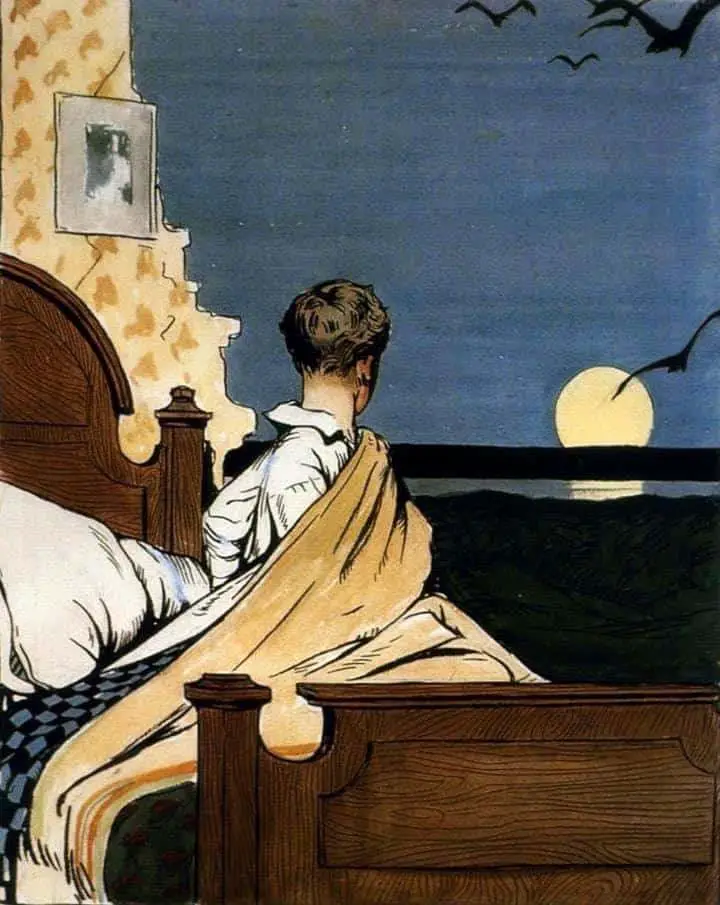
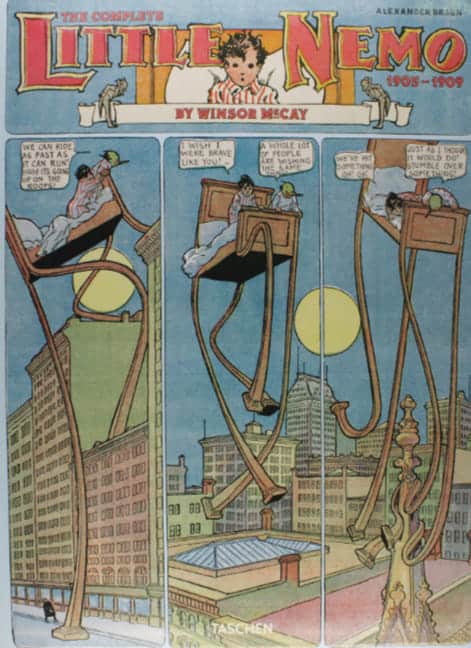
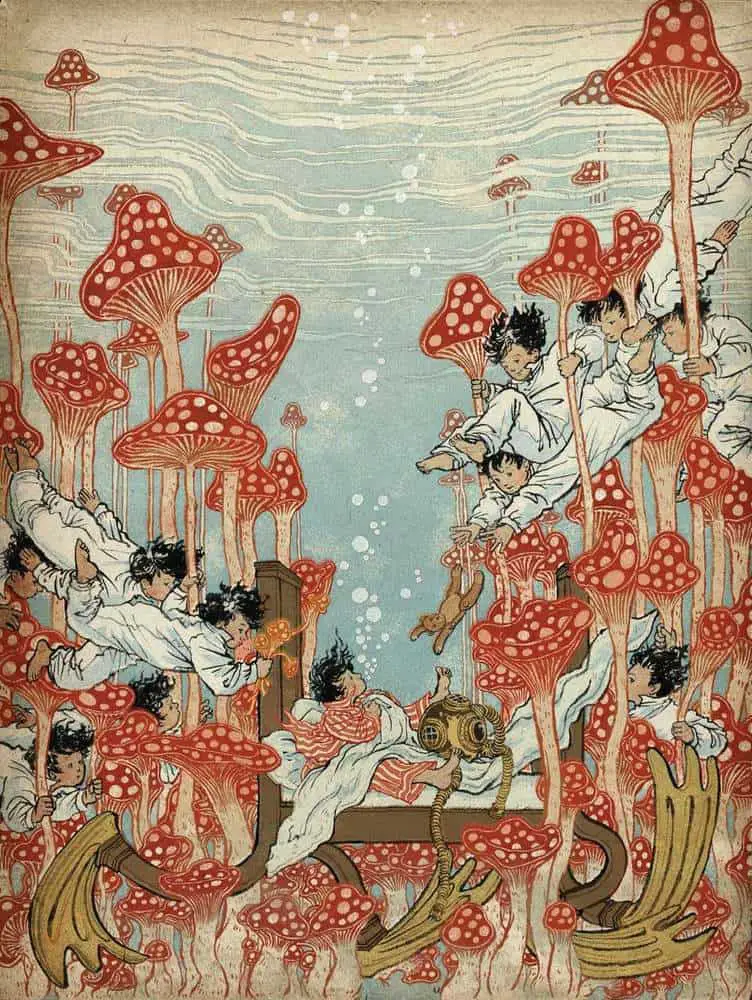
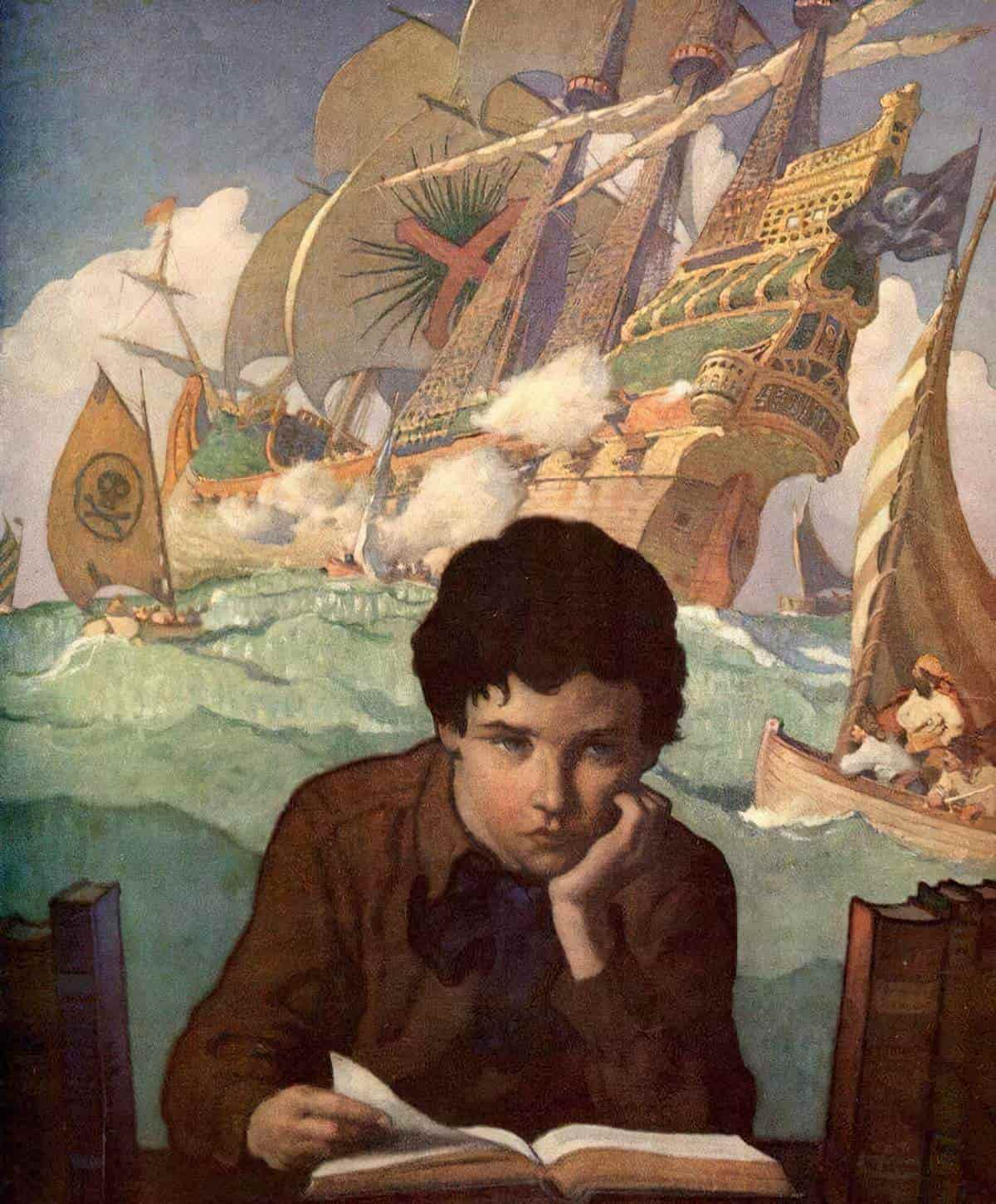
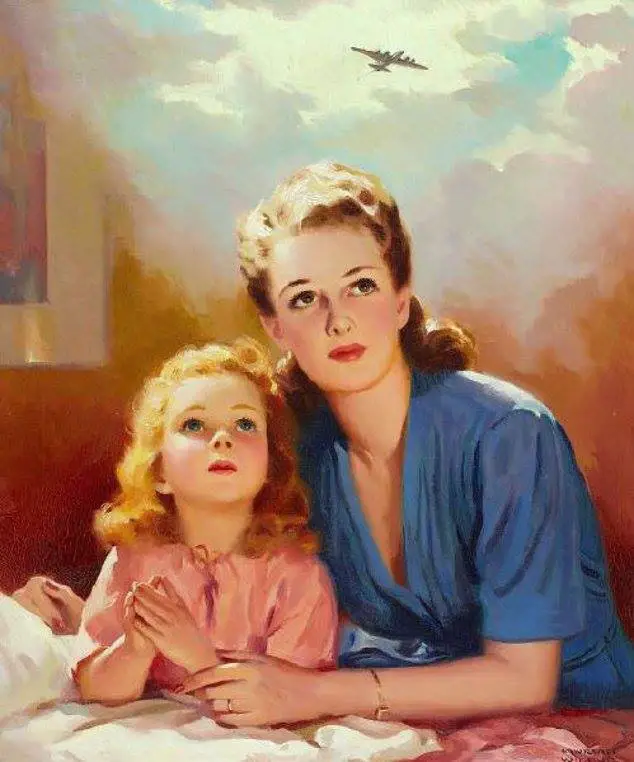
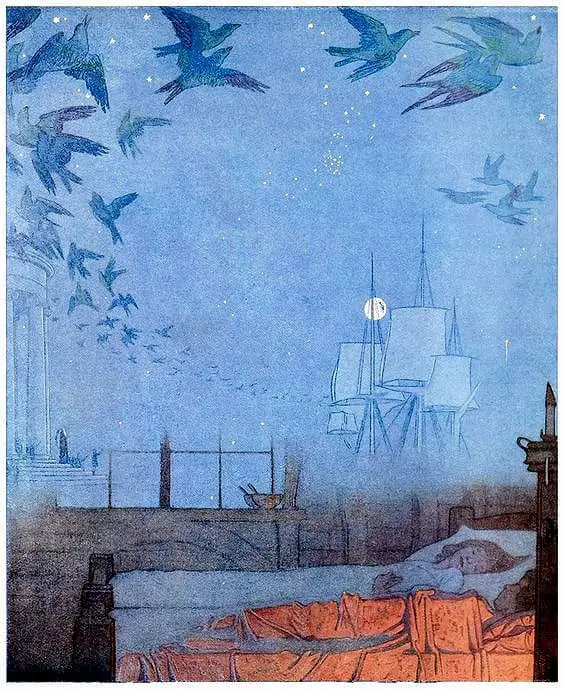
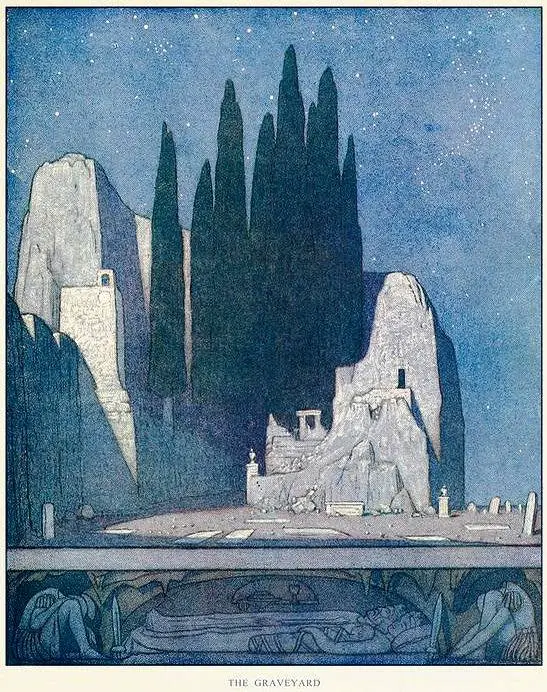
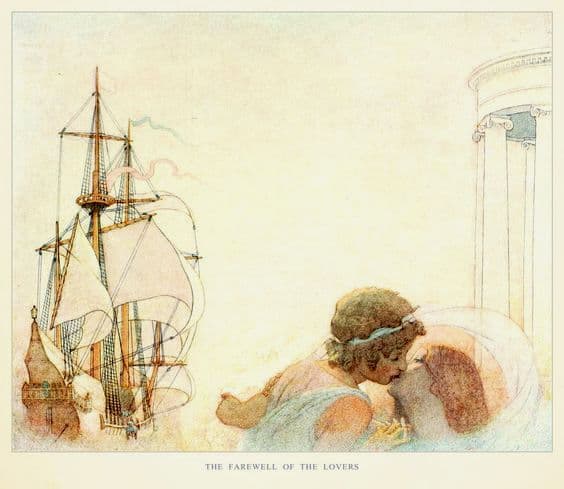
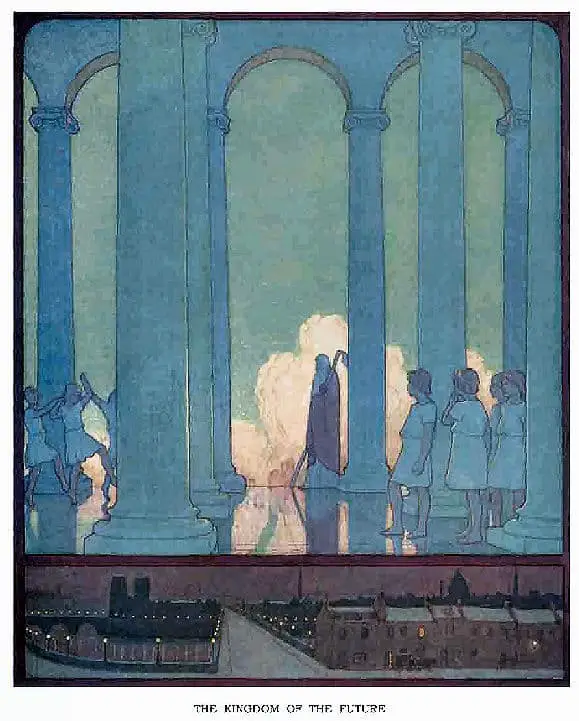
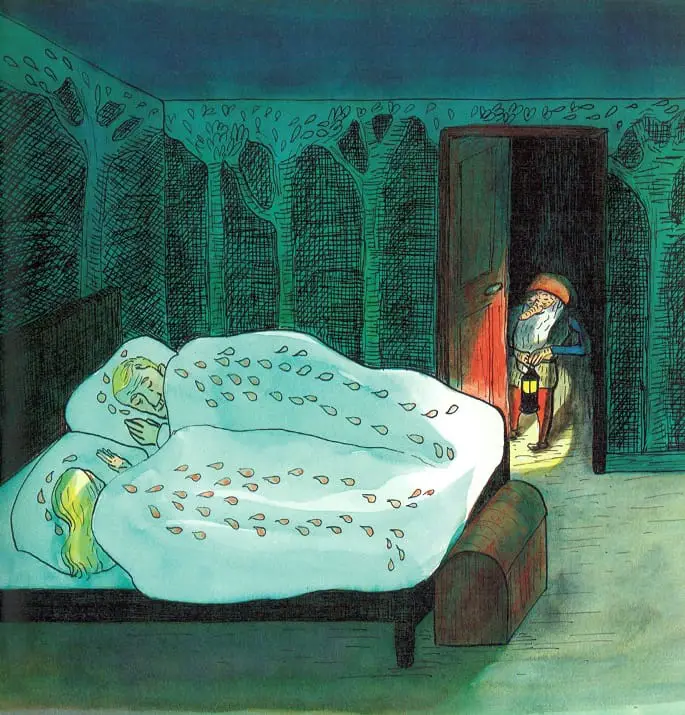
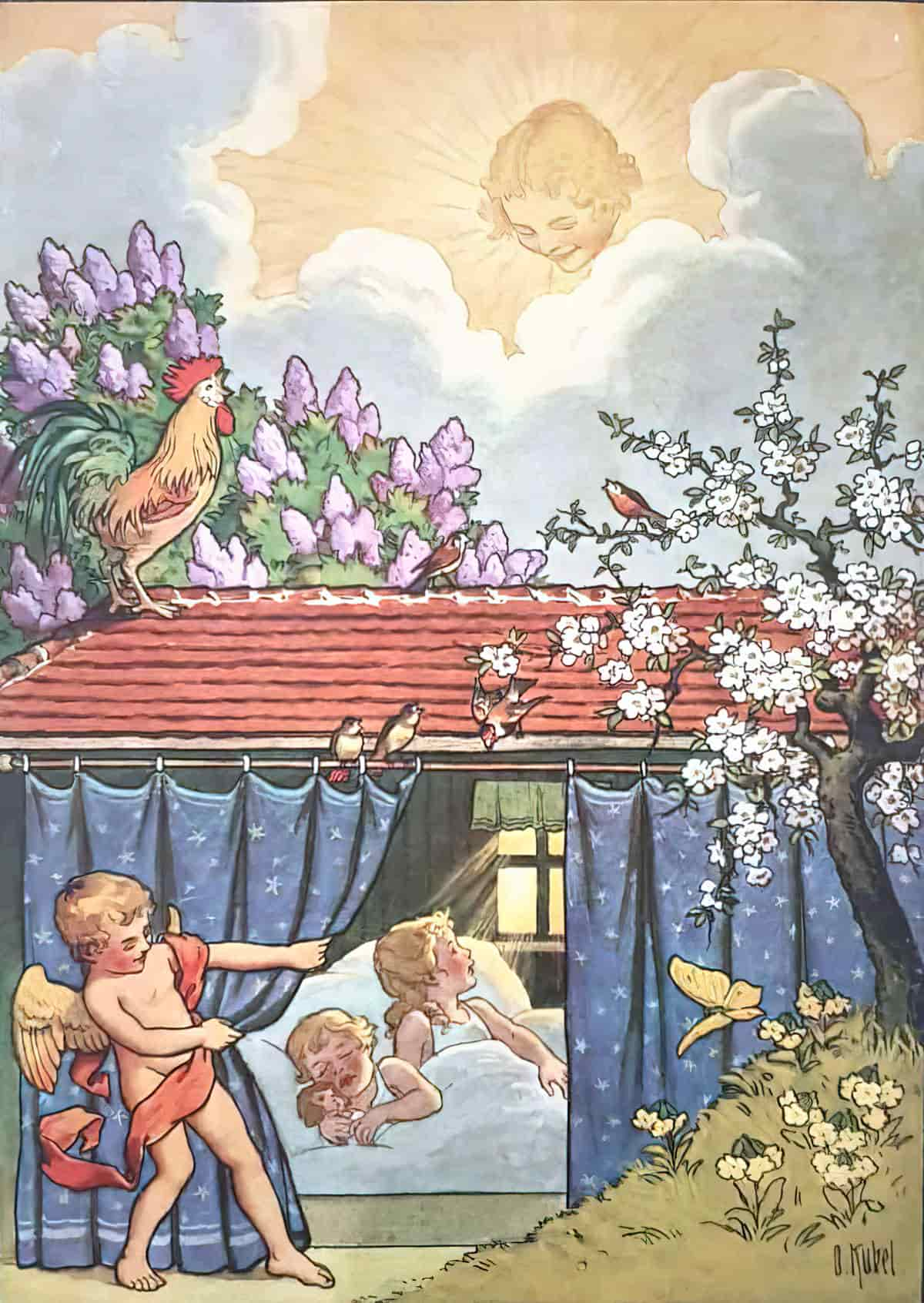
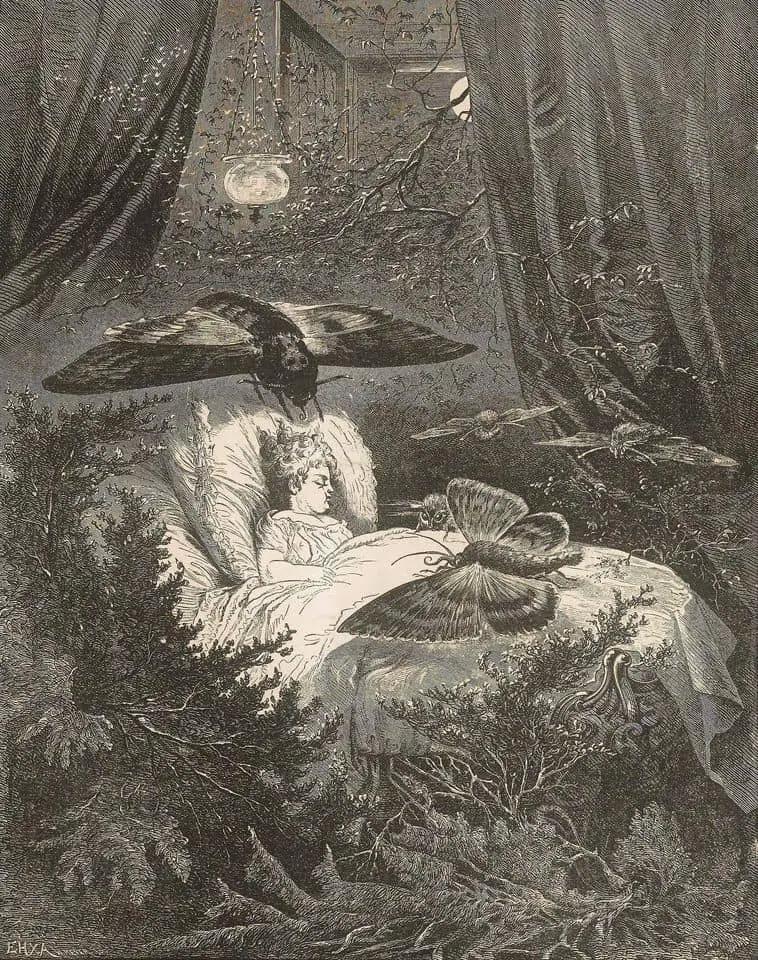
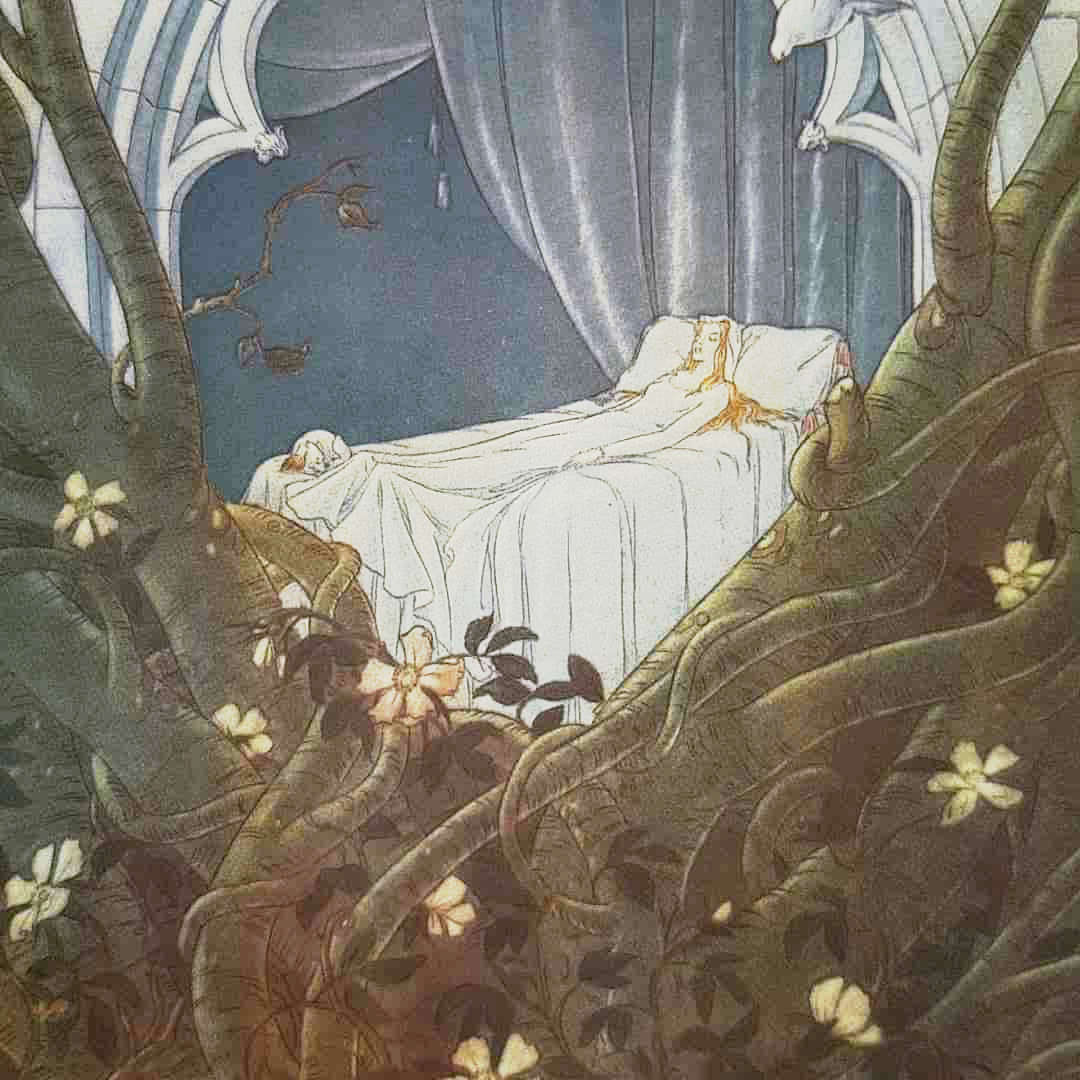
BIG STRUGGLE
Walter’s dream plays out like a dystopian movie. The disparate parts are connected by a flash back to Walter lying in his bed. Images of the bed are very small on the page, with plenty of white space. This gives out to full bleed double spreads. Why?
- The reading experience reason: In contrast, the full bleeds look more amazing
- The metaphorical reason: In his real life Walter’s world view is very narrow and constricted (like the bounding box). But in his dream he is able to see the bigger picture (literally).
ANAGNORISIS
Notice that as the story progresses, the image of the bed becomes more fully integrated into the dream world, with aspects of the dream world suffusing the real bed. This indicates that Walter’s world view is being changed by the dystopian dream.
He wakes up and feels terrible. He has realised that the science fiction gizmos of his awake-dreams are not important compared to the need to care for our planet.
This revelation (and guilt) leads to an action: He rushes downstairs and fixes the mess he made of the recycling bin yesterday.
And when he gets a tree for his birthday, he considers this tree the best gift, even beside his laser gun set, electric yo-yo and inflatable dinosaurs.
Some dream!
NEW SITUATION
There is a final plot revelation and it leads to a cosy ending. Walter again dreams of the future, but this time the future is fully grounded in the reality of home. His tree, alongside Rose’s tree, have grown into magnificent shady trees and provide a lot of comfort, not just for himself but for Rose’s great-grandchild.
All is well with the world.
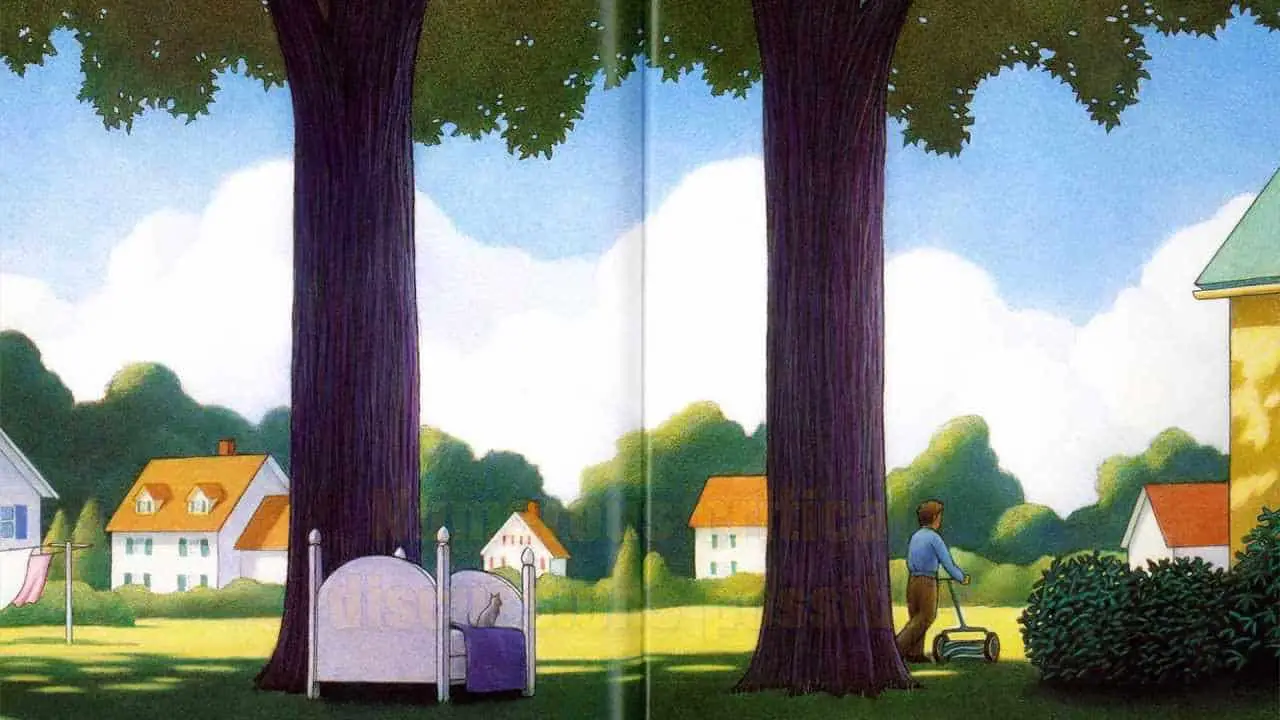
This dream was clearly not ‘just a dream’.
Have you ever experienced a dream so powerful that you were morally affected?
